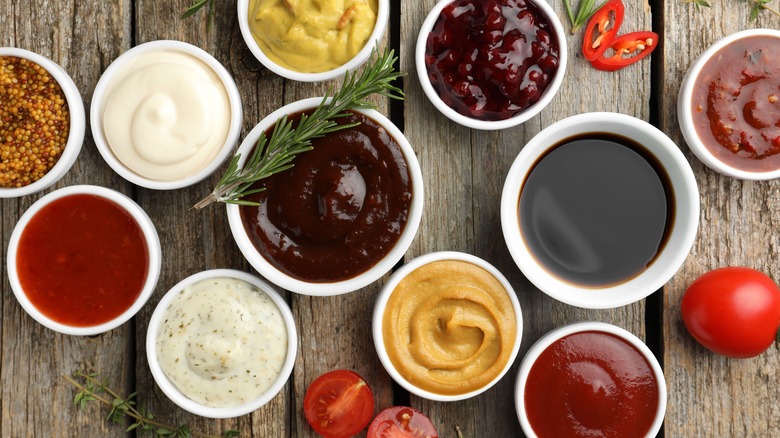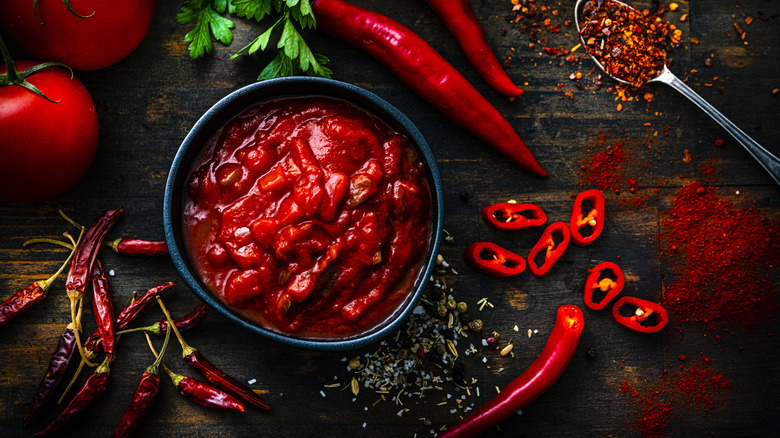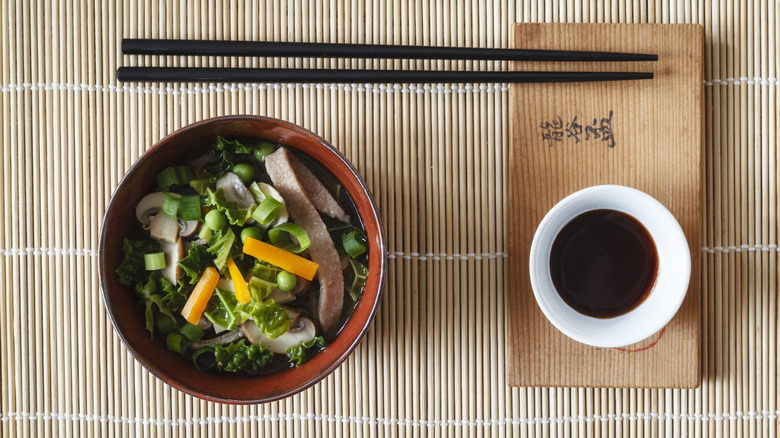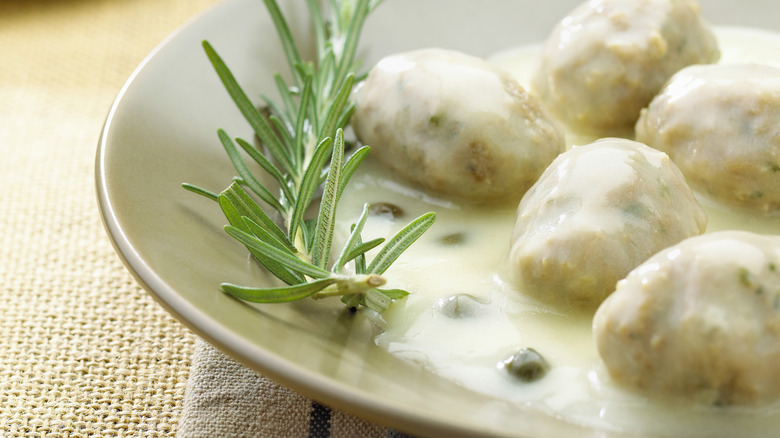The Ancient Origins Of The World's Earliest Sauces
We're so lucky to live in a timeline when we have access to sauces from around the world, many of them with truly ancient histories. While staples like béchamel and Hollandaise sauce may be more recent inventions, people have been enhancing their food with delicious flavored liquids since the earliest civilizations. Not only do they elevate the taste of other foods, but they can also add moisture, tenderize tough ingredients like certain cuts of meat and raw vegetables, and improve the consistency and mouthfeel of a dish, making it creamy or smooth.
From the southern hemisphere to the far east, no matter where you look, you'll find long traditions of sauce-making. In fact, you can trace many of today's most popular condiments (including salsa, soy sauce, and vinegar-based sauces) back thousands of years. Let's jump in the culinary time machine and travel back to explore the origins of some of these beloved sauces.
Some like it hot
The very oldest sauce may be hot sauce. First discovered in what is now Mexico in 7000 BCE, it was made by Aztecs who combined chili peppers with water to flavor their food. It didn't take long for that tingly taste sensation to light up the world. After the Columbus expedition brought the ingredients back to Spain in 1493, it was adopted by Portuguese merchants, who carried it to Africa in the 1500s and to India and the Far East soon afterwards. From there, it traveled the Silk Road to Europe, influencing paprika-based dishes in Hungary. Meanwhile, it also worked its way north from Mexico to the American Southwest.
Today, that Aztec influence can be tasted in many of the sauces you have in your fridge, including Tabasco sauce, which takes its name from a pepper that grows in Tabasco, Mexico. It's also the predecessor of salsa, which added tomatoes and fresh vegetables to the mix. And who could forget sriracha, the smoking hot, pepper-based Thai sensation that has taken the world by storm.
The granddaddy of umami
Sure, spice is nice, but the savory, complex notes of umami sauces like soy sauce also have a long history. The very first recipes were described in Chinese literature over 3,000 years ago. These early sauce makers mixed chunks of meat with a millet-based fermenting agent and salt, then left it to ferment for 100 days, creating a liquid called jiang you. Eventually, they substituted soybeans for meat, resulting in the Chinese soy sauce we know today.
Culinary travel was responsible for the spread of this sauce too. During the late 13th Century, a Buddhist monk from Japan brought back a soy-based miso paste from a visit to China. The townspeople noticed that the pools of liquid around fermenting miso were just as tasty, so they collected it and named it tamari. By the mid 1700s, the Japanese were exporting their version of soy sauce to Holland, where it spread to other parts of Europe and the world.
The early stirrings of European sauces
Thanks to the age of exploration, Europe was constantly being fed influences from around the world. Many of these contributed to its grand tradition of sauce-making. For example, ancient Greek and Roman texts mention a sauce called garum, which was made from anchovies or sardines mixed with salt and left to ferment in the sun. These early cultures also used a type of vinegar made from wine.
The oldest known French cookbook listed 17 sauces, but at its publication in the 1300s, cooks typically relied on bread, egg yolks, or vegetables to thicken them. It wasn't until the 1600s that flour-based roux and the practice of reducing sauces to concentrate flavors entered the scene, opening the door to béchamel, Hollandaise, and the other mother sauces that we know today. Another Mediterranean staple is aioli, which was first mentioned in Provençal newspapers in 1891 and made with the region's plentiful egg yolks, olive oil, and garlic.
From spicy to savory and tangy, human history is rich in culinary innovations. Pick up a menu or simply open your refrigerator to explore. The world of sauces awaits!



